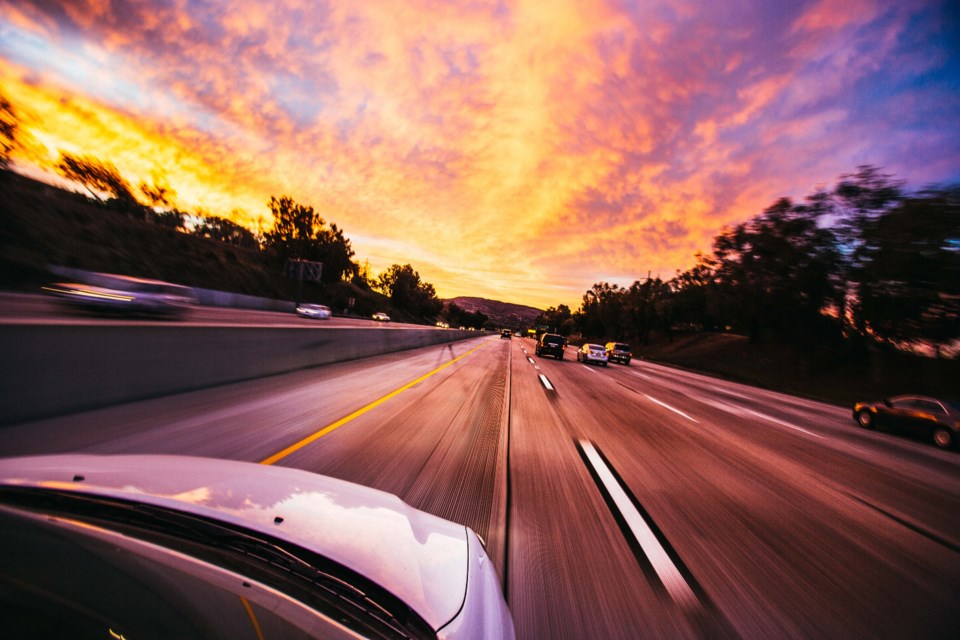If you have spent any time on social media, maybe you’ve heard all the griping online about drivers taking up the left lane of multi-lane freeways in Ontario. It's been going on forever. Even the police have tweeted viral videos complaining about it.
Generally, the complaint goes like this: “If you are in the left lane and someone is behind you, clear out of the way.”
But is the issue really that black-and white?
I have been commuting from Barrie to Toronto for more than 30 years. For the most part, I have seen it all on the roads, although in the past few years I’ve witnessed strange and dangerous occurrences on the highway that have even surprised a veteran of the road like me.
There aren’t too many safe places to be on a fast-moving highway anymore, but I will make the case that staying on the left is the best place to be.
Don’t get me wrong, the far-left lane is one that should be used for passing slower traffic, and that’s what I do. It just never seems to be in a way that pleases most other drivers that are behind me.
It’s time to break down the situations that I find myself in when I choose to travel along in the “fast lane.”
When being trapped inside a vehicle for over an hour each day as I drive to work, I usually find myself analyzing everything around me, mostly out of sheer boredom.
The “slow lane,” as it is referred to, usually comprises tractor-trailers, motor homes, elderly folk, panic-stricken drivers who seem to be too frightened of freeway travel to venture into any other lane, and, lastly, the “99-ers,” as I call them. This last bunch are the drivers that refuse, under any circumstances, to go faster than the posted speed limit of 100 km/h.
The middle lane of Highway 400 is where most of the normal and level-headed drivers seem to live, which is where I like to classify myself most days.
The “fast lane” is therefore seemingly the domain of the “late-for-work” crowd, the tough-guy jacked-up pickup truck warrior, the kamikaze sport-bike pilots, and the young “male-bravado” in their exhaust-gargling Mustang racers.
Throw in a few non-signalling, lane-changing Mercedes and BMW fellows and you start to get a feel for the cross-section of life during the morning and afternoon commutes to Toronto and back.
The above arrangements work most of the time, but it’s when these different species of drivers mix and find themselves outside of their native lanes is where the trouble begins.
My personality dictates that I try to not take many risks behind the wheel. I hate changing lanes more than I need to and I like to stick to a lane that is undisturbed by criss-crossers and people who aren’t paying attention to what they need to be doing, such as driving their vehicles in a safe and responsible manner.
Therefore, through my experience, that safer lane with the least amount of interaction with cars from other lanes is, of course, the left lane.
When traffic is fairly thick, I try to stay in the left lane as long as I am passing cars every 30 seconds or so.
The problem with that is there is almost always an aggressive driver behind me flashing their lights at me or tail-gating so close to me that I can’t even see their headlights in my rear-view mirror.
I always drive at 120 km/h when I am in the fast lane. And let’s be honest, that is the unofficial “real” speed limit on the 400-series highways in Ontario. The police will rarely ever pull you over if you are at or under that speed.
That driver behind me? They have raced up behind me going 130 km/h or more. And they want me out of the way.
No, I say.
I am going as fast as you can go on the freeway without getting pulled over and I am passing cars in the centre lane. I may not be flying past them, but I am constantly gaining on them at a reasonable rate. If I change lanes to accommodate the speeder behind me, I must then change lanes yet again to get around the slower cars in the centre lane that I now find myself behind because I let myself get pushed out of the way.
What I am doing is lessening my chances at having to repeatedly change lanes without end, which would increase my chances of a collision with another vehicle as the middle- and right-lane traffic are also changing lanes a multitude of times. It's just a matter of statistics.
I am staying put and continuing with my speed of 120 km/h until there is a very long gap in the traffic in the middle lane. I refuse to get out of the way of someone who is wanting to drive at 130, 140 or more, because, of course, that speed is obviously illegal and is yet another dangerous variable and probably the most dangerous aspect of driving to contend with on the roads.
And hey, I am likely saving you a very expensive speeding ticket, because of that cop waiting for you at the next interchange.
You’re welcome.
Kevin Lamb is a Barrie-based freelance photojournalist and reporter.



